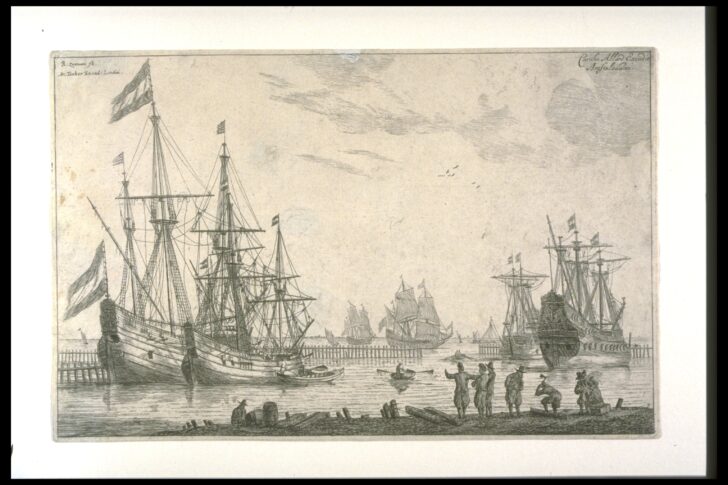Study of Ships; no. 3 from the series of 13 plates, Various Seascapes, Ports, and Harbors
Reinier Nooms

Description
These two works highlight aspects of Dutch mercantile activity and the signi cance of maritime trade in Northern Europe in the seventeenth century. The prolific Nooms, who often signed his works Zeeman (meaning seaman), specialized in depictions of ships, ports, and other marine views at this time in Holland; he executed about 170 etchings between 1650 and 1656. This print belongs to a set of twelve views of shipyards and harbors. A number of boats are enclosed in the harbor to be refitted—a quiet moment in the life of Dutch shipping. Two speedy fluyt ( fluit, or ute) ships are anchored on the left, while two larger East Indiamen, boats used for transporting goods from the Dutch East India Company’s territories in Asia, are on the right. The absence of sails on the spars of these large ships and
their tattered flags suggest that they have returned from long journeys at sea. Although the gures are small, their varied poses lend visual interest to the image and encourage the viewer to contemplate the large expanse of the waterway and the variety of human activity.
While the print signals Holland’s thriving economy and commercial ambitions, the drawing is more restricted in scope, emphasizing merchant activity and the significance of smaller waterways in local commerce. On the outskirts of the city, people are busy loading goods on and off of boats and sailing down the winding river. The figures and their activities guide the viewer into the working landscape that extends and also dissolves into the distance.
Usage Rights:
If you are interested in using an image for a publication, please visit https://umma.umich.edu/request-image/ for more information and to fill out the online Image Rights and Reproductions Request Form.